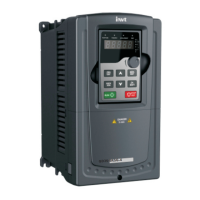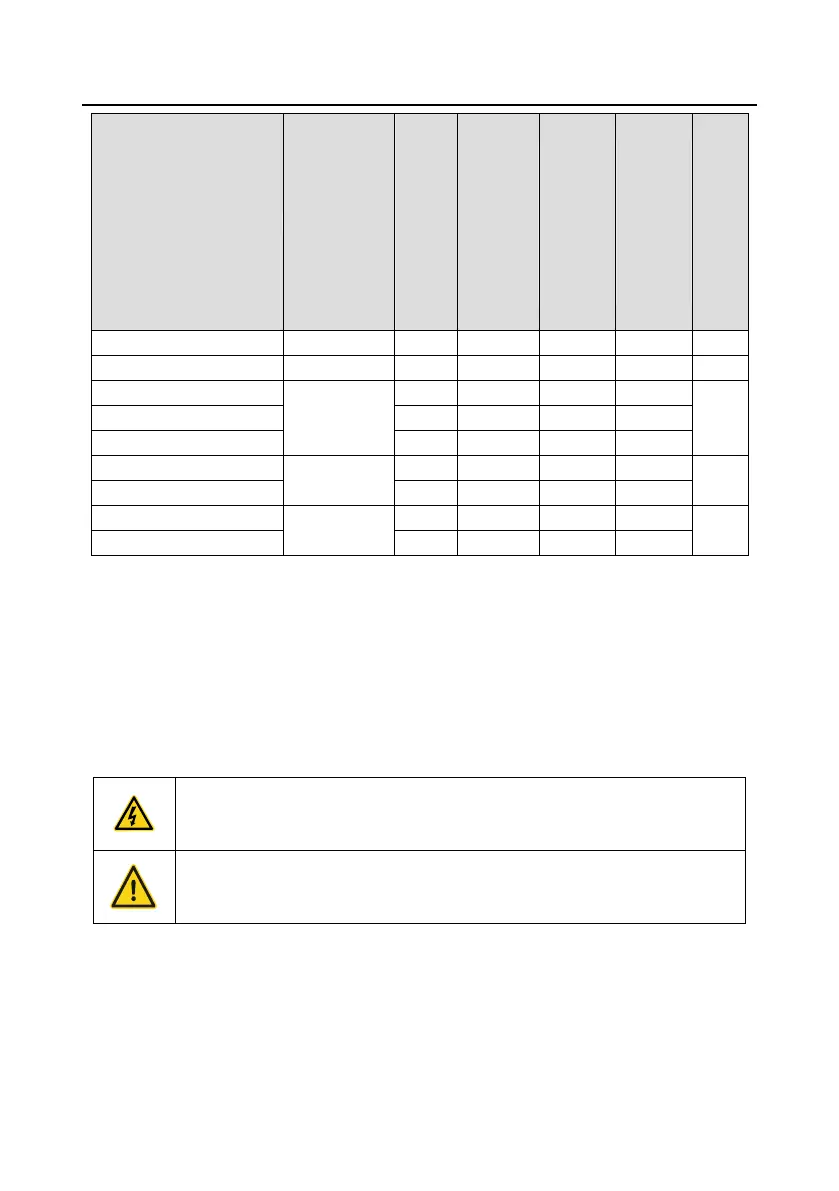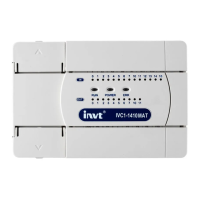Goodrive35 Series Closed-loop Vector Control VFD Optional peripheral accessories
286
Brake
resistor
value
matched
with
100%
brake
torque
(Ω)
Dissipation
power of
brake
resistor
(kW)
(10%
brake)
Dissipated
power of
brake
resistor
(kW)
(50%
brake)
Dissipated
power of
brake
resistor
(kW)
(80%
brake)
Min
allowed
brake
resistor
(Ω)
Note:
1. Select the resistor and power of the brake unit according to the data our company provided.
2. The brake resistor may increase the brake torque of the VFD. The preceding table describes the
resistance and power for 100% brake torque, 10% brake usage, 50% brake usage, and 80% brake
usage. You can select the brake system based on the actual operation conditions.
3. When using an external brake unit, set the brake voltage class of the brake unit properly by
referring to the manual of the dynamic brake unit. If the voltage class is set incorrectly, the VFD may
not run properly.
Do not use brake resistors whose resistance is lower than the specified minimum
resistance. VFDs do not provide protection against overcurrent caused by
resistors with low resistance.
In scenarios where brake is frequently implemented, that is, the brake usage is
greater than 10%, you need to select a brake resistor with higher power as
required by the operation conditions according to the preceding table.
D.8.1.2 Brake units for AC 3PH 520 V (-15%)–690 V (+10%) brake unit
External brake units need to be configured for Goodrive350 series VFDs of 660 V. Select brake
resistors according to the specific requirements (such as the brake torque and brake usage
requirements) on site.

